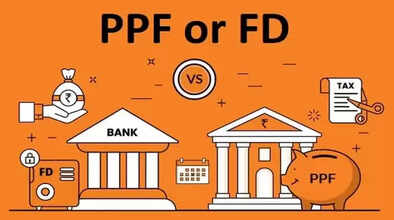PPF vs FD: Which Investment Option is Better for You?

When it comes to investment, every individual wants two things — safety of capital and reliable returns. Not everyone is comfortable with high-risk options like the stock market or equity mutual funds. For such investors, safe and traditional options like Fixed Deposits (FDs) and the Public Provident Fund (PPF) remain highly popular.
But the big question is: Which one is better — PPF or FD? Let’s break it down.
Why People Prefer Safe Investments
Safe investment instruments are designed for those who prioritize security over high but uncertain returns. In India, millions of people prefer FD and PPF because:
-
Their money remains secure.
-
Returns are predictable.
-
Both options are backed by banks or the government, ensuring trust.
Fixed Deposit (FD): The Flexible Choice
FDs are among the most common forms of investment in India. Here’s why people choose them:
-
Assured Returns: Banks offer a fixed rate of interest that doesn’t change during the FD tenure.
-
Liquidity: The money can be withdrawn anytime, though premature withdrawals may attract a small penalty.
-
Flexible Tenure: You can invest in FDs for as little as 7 days to as long as 10 years.
-
Taxability: The interest earned on FDs is taxable as per the investor’s income tax slab.
FDs are ideal for those who might need access to their funds at short notice.
Public Provident Fund (PPF): The Long-Term Wealth Builder
PPF is a government-backed savings scheme with attractive long-term benefits.
-
Tax-Free Returns: The biggest advantage is that interest earned on PPF is completely tax-free under Section 80C.
-
High Safety: Since it is backed by the government, there is no risk of losing your investment.
-
Lock-in Period: PPF has a 15-year lock-in. Partial withdrawals are allowed only after 5 years.
-
Attractive Interest Rate: The interest is revised quarterly but usually stays higher than many bank FDs.
PPF works best for those who want to build a retirement corpus or save for long-term goals without worrying about market risks.
PPF vs FD: A Detailed Comparison
| Factor | Fixed Deposit (FD) | Public Provident Fund (PPF) |
|---|---|---|
| Interest Rate | Fixed, varies by bank (5.5%–7.5% approx.) | Government-set, currently around 7.1%–8% |
| Tax Benefits | Interest is fully taxable | Interest is completely tax-free |
| Liquidity | Can break anytime (with penalty) | Locked for 15 years (partial withdrawal after 5 years) |
| Risk Factor | Very low, bank-backed | Zero risk, government-backed |
| Best For | Short to medium-term needs | Long-term wealth creation & retirement |
Which One Should You Choose?
The choice between FD and PPF depends on your financial goals and tax situation:
-
Choose PPF if:
-
You are planning for long-term financial goals like retirement or children’s education.
-
You want tax-free returns and are okay with your money being locked for several years.
-
You are in a higher tax bracket and want to save on taxes under Section 80C.
-
-
Choose FD if:
-
You need quick access to your money at any time.
-
You prefer short-term or medium-term investments.
-
You are in a lower tax bracket, so taxation on FD interest doesn’t impact you much.
-
Final Verdict
Both PPF and FD are safe and reliable, but they serve different purposes. PPF is better for long-term wealth creation with tax-free benefits, while FDs are more flexible for short-term needs.
For a balanced portfolio, many financial planners recommend investing in both FD and PPF — FDs for liquidity and PPF for tax-free long-term growth.

